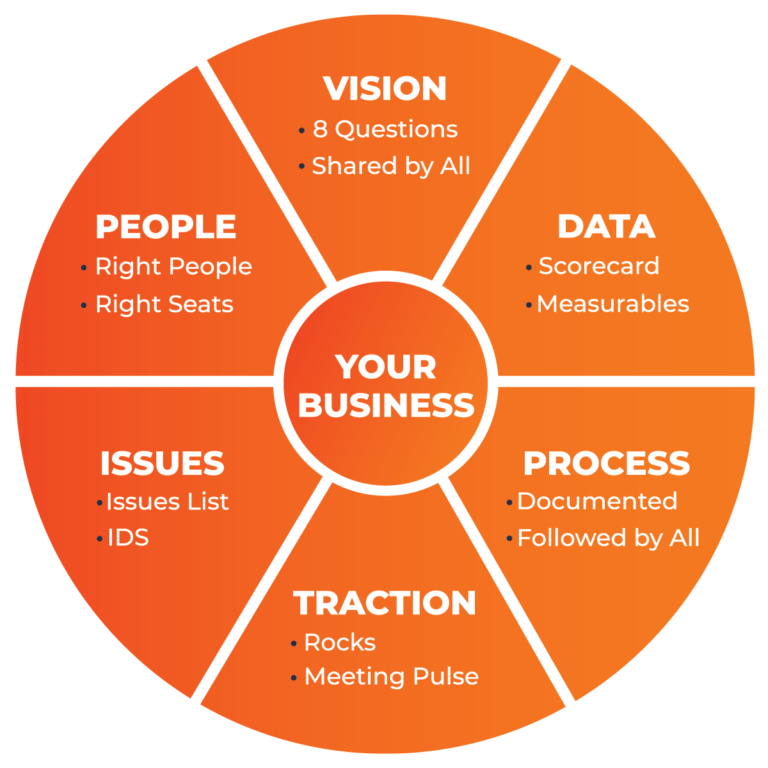Summary:
The Entrepreneurial Operating System (EOS) is a practical framework designed to help businesses streamline operations, enhance leadership alignment, and drive sustainable growth. This article explores EOS, its core components, implementation steps, benefits, and common challenges, providing essential insights for business leaders looking to transform their organizations.
What is EOS?
EOS is a structured operating methodology specifically developed for entrepreneurial businesses aiming to clarify their vision, improve team alignment, and boost operational efficiency. Created by Gino Wickman, EOS simplifies complex business processes and helps leadership teams achieve clarity and accountability.

Core Components of EOS
EOS consists of six key components:
Vision: Defining clear goals and aligning everyone towards the same direction.
People: Ensuring the right people are in the right positions.
Data: Utilizing objective metrics and KPIs to measure success.
Issues: Identifying and solving problems effectively.
Process: Systemizing operations to ensure consistency and efficiency.
Traction: Instilling discipline and accountability throughout the organization.
Steps for Implementing EOS
Implementing EOS typically follows these steps:
Introduction and Buy-In: Educate leadership about EOS, securing commitment from the team.
Vision Building: Conduct sessions to define company vision, core values, and long-term goals.
People Analysis: Assess current staff alignment with company values and positions.
Accountability Setup: Establish clear roles, responsibilities, and expectations.
Process Documentation: Clearly outline and document key processes within the organization.
Measurement Implementation: Identify and track key metrics (scorecards) regularly.
Ongoing Management: Hold regular Level 10 meetings to review progress, address issues, and maintain alignment.


The Importance of EOS Scorecards
EOS scorecards are critical tools used within the Data component to track key performance indicators (KPIs). Scorecards provide businesses with clear, objective metrics that reflect their current performance against established goals. Scorecards typically include weekly measurable data points that highlight trends, enabling leadership teams to quickly identify issues, make data-driven decisions, and ensure accountability throughout the organization.
Effective scorecards include:
Clearly defined metrics aligned with strategic goals
Specific, measurable data points
Regular updates and reviews (typically weekly)
Accountability assignments for each metric
Implementing EOS provides numerous advantages, including:
- Enhanced organizational clarity and focus
- Increased accountability across teams
- Improved operational efficiency and productivity
- Stronger leadership alignment
- Faster problem resolution
- Sustainable business growth
Common Challenges in EOS Implementation
- Initial resistance to change from team members
- Difficulty maintaining discipline in meetings and processes
- Misalignment between leadership vision and team execution
- Insufficient or unclear metrics
Conclusion
EOS provides businesses with a clear, structured system for achieving operational excellence. By focusing on vision alignment, people management, data-driven decision-making through scorecards, systematic processes, and accountability, EOS empowers companies to reach their full potential.
FAQs
EOS aims to help entrepreneurial businesses achieve clarity, alignment, and accountability to drive sustainable growth.
EOS was created by Gino Wickman, a renowned author and business coach.
Typically, EOS implementation takes between 12 to 24 months, depending on the company’s size and complexity.
Yes, EOS is designed for small to medium-sized entrepreneurial companies, typically with 10 to 250 employees.
A Level 10 meeting is a structured, weekly meeting designed to review performance metrics, discuss issues, and maintain team accountability and alignment.
EOS scorecards are tools used to track weekly metrics aligned with the company’s strategic objectives, enabling quick identification of issues and ensuring team accountability.
